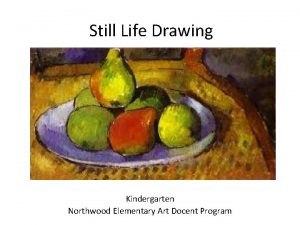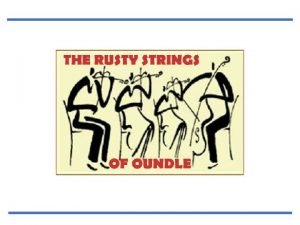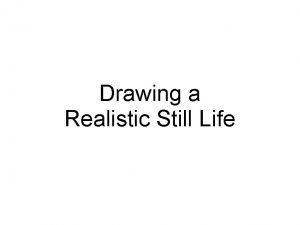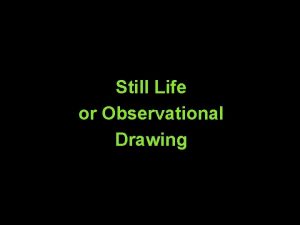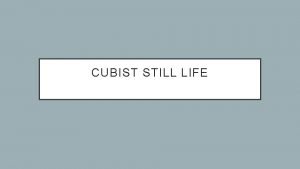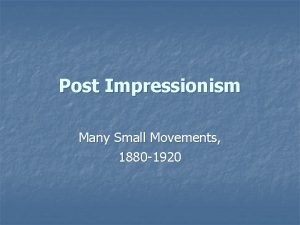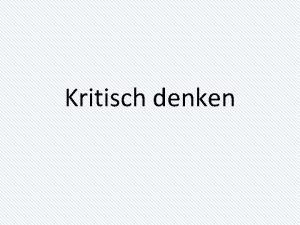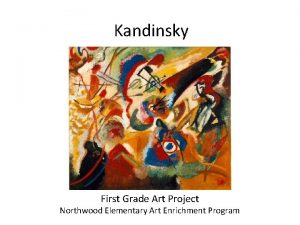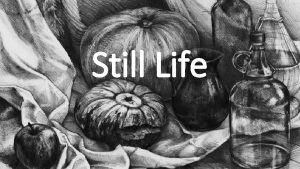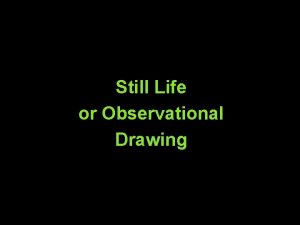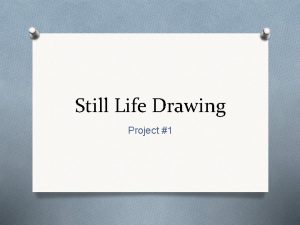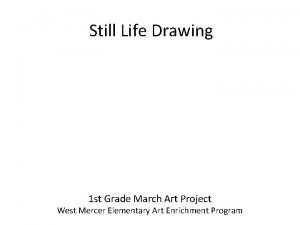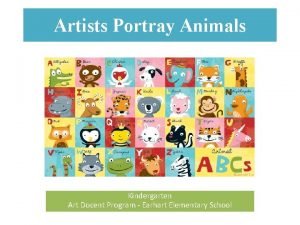Still Life Drawing Kindergarten Northwood Elementary Art Docent











- Slides: 11

Still Life Drawing Kindergarten Northwood Elementary Art Docent Program

Examples of Still Life Art

Pitcher and Fruit by Paul Cezanne


Sunflowers by Vincent van Gogh

Dishes and Fruit by Henri Matisse

Today’s Project • Still life drawing – What does still life mean? • Today we are going to draw objects using simple shapes – An orange is a circle

Step 1 - Name • Write your name on the back of your paper. Lets play a quick game : • Look at the objects in front of you and take turns naming something you see. • Talk about texture, detail, color and shadow.

Step 2 – Observe what is in front of you • Take the time to really see the shapes and sizes in front of you • What are the objects made of? – circles – Rectangles • Proportions- What is the biggest thing and what is the smallest • Where do objects overlap? • What are the shapes in between the objects?

Step 3 – Practice Drawing • • On your index card, draw the simple shapes of your objects using pencil. Draw them BIG- fill the page Draw what you see. Make sure you draw the edge of the table! Use your eraser to make corrections. This is practice so try again if it isn’t quite right When you have a practice draft that fills the page, then move on to your final paper

Step 4 – Draw Still Life • Move to your big paper. • Draw your objects using simple shapes with pencil. – It is ok to make correction lines • • • Outline your shapes with a dark color of chalk pastel. Fill in your shapes with the chalk pastels. Color the table surface and the wall behind. Cover the whole paper with color. Try blending colors with your finger. Make sure you put some shadows in your drawing.
